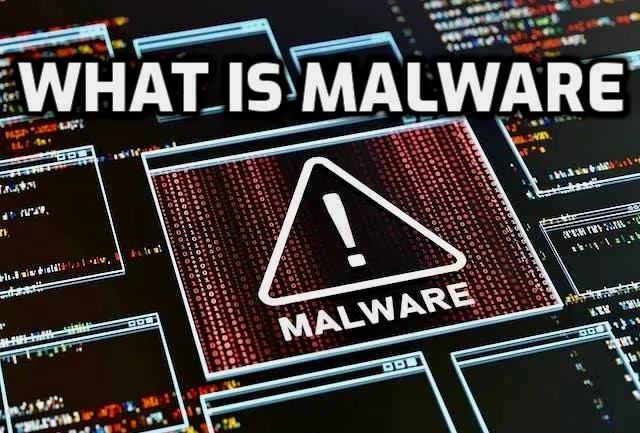How to Protect Against Zero-Day Exploits
Zero-day exploits represent a significant cybersecurity threat, targeting unpatched vulnerabilities in software and hardware. These attacks can have devastating effects on individuals, businesses, and even governments. This blog explores how zero-day exploits work, real-world examples, preventive measures, and their impact on organizations.
Introduction: Explanation of Zero-Day Exploits
A zero-day exploit refers to a cyberattack that takes advantage of an unknown or unpatched vulnerability in software, hardware, or firmware. The term “zero-day” indicates that developers have had zero days to fix the vulnerability before it’s exploited. Hackers use these exploits to gain unauthorized access, steal data, or deploy malware, often before the vendor even becomes aware of the flaw.
How Zero-Day Attacks Occur: Steps Hackers Take to Exploit Unpatched Software

Hackers exploit zero-day vulnerabilities through a series of calculated steps:
- Identifying Vulnerabilities:
- Attackers discover vulnerabilities through various means, including reverse engineering software, analyzing source code leaks, or using sophisticated scanning tools.
- Developing Exploits:
- Once a vulnerability is found, hackers develop exploit code to take advantage of it. The code is designed to bypass security measures, infiltrate systems, or install malicious payloads.
- Deploying the Exploit:
- Hackers deploy the exploit by targeting users through phishing emails, malicious websites, or compromised software updates. These attacks often go undetected because antivirus software and firewalls may not recognize the new threat.
- Exploiting the System:
- Once inside, hackers can install backdoors, steal sensitive information, or disrupt operations. Since the vulnerability is unknown, defenders have no immediate protection or patch to counter the attack.
- Selling the Exploit:
- In some cases, attackers sell zero-day exploits on the dark web to other malicious actors, increasing the potential damage.
High-Profile Examples: Major Zero-Day Vulnerabilities and Their Impact

Several high-profile zero-day vulnerabilities have caused significant damage, highlighting the risks of unpatched software:
- Stuxnet (2010):
- Details: Stuxnet exploited multiple zero-day vulnerabilities in Microsoft Windows to target Iran’s nuclear facilities, causing physical damage to centrifuges.
- Impact: It demonstrated the potential of zero-day exploits to cause not only data breaches but also physical destruction of infrastructure.
- Heartbleed (2014):
- Details: This zero-day vulnerability affected the OpenSSL cryptographic library, exposing sensitive information like passwords and private keys.
- Impact: Heartbleed compromised millions of websites, affecting major companies like Yahoo and various online services. It underscored the dangers of vulnerabilities in widely-used cryptographic protocols.
- EternalBlue (2017):
- Details: This zero-day exploit targeted a vulnerability in Microsoft’s SMB protocol, later used in the WannaCry ransomware attack.
- Impact: WannaCry affected over 200,000 computers globally, disrupting operations in hospitals, banks, and other critical sectors.
- Pegasus (2021):
- Details: Pegasus spyware exploited zero-day vulnerabilities in iOS and Android devices to conduct surveillance on journalists, activists, and government officials.
- Impact: The attack highlighted the vulnerability of mobile devices to zero-day exploits, raising concerns about privacy and human rights.
Preventing Zero-Day Exploits: Regular Updates, Monitoring Tools, and Vulnerability Management

Preventing zero-day attacks requires a proactive approach with multiple layers of defense:
- Regular Software Updates:
- Keep all software, applications, and operating systems up to date. Enable automatic updates whenever possible to ensure patches are applied promptly.
- Advanced Monitoring Tools:
- Use intrusion detection and prevention systems (IDPS) that can identify unusual behaviors, helping detect potential zero-day exploits before they cause major damage.
- Vulnerability Management:
- Implement a robust vulnerability management program that includes regular scanning, penetration testing, and prioritization of critical patches.
- Threat Intelligence:
- Leverage threat intelligence tools to stay informed about emerging zero-day threats. These tools provide real-time data on newly discovered vulnerabilities and exploits.
- Sandboxing:
- Use sandboxing to run applications or code in isolated environments, preventing potentially harmful exploits from affecting the broader system.
Security Measures: Importance of Patch Management and Proactive Threat Detection

Effective security measures help mitigate the risks posed by zero-day exploits:
- Patch Management:
- Implement automated patch management tools to ensure vulnerabilities are patched as soon as updates become available. Regularly review patching processes to address potential gaps.
- Endpoint Detection and Response (EDR):
- Deploy EDR solutions to monitor endpoints, identify suspicious behavior, and respond swiftly to potential zero-day attacks.
- Network Segmentation:
- Segment networks to prevent attackers from moving laterally within an organization. By isolating critical assets, network segmentation limits the potential damage from zero-day exploits.
- Multi-Factor Authentication (MFA):
- Use MFA to add an extra layer of security, making it harder for attackers to access systems, even if initial credentials are compromised.
- Regular Security Audits:
- Conduct regular security audits to identify potential weaknesses and ensure all systems are following best security practices.
Impact on Businesses: How Zero-Day Exploits Affect Organizations and Individuals

Zero-day exploits can have severe consequences for businesses and individuals:
- Financial Loss: The cost of dealing with a zero-day exploit includes downtime, data recovery, and potential regulatory fines.
- Reputational Damage: High-profile breaches can damage customer trust and impact brand reputation, affecting long-term business prospects.
- Operational Disruption: Zero-day attacks can disrupt critical services, affecting productivity and the ability to deliver services.
- Data Theft: Sensitive information such as customer data, financial records, and intellectual property can be stolen, leading to legal and compliance challenges.
Conclusion: Staying Ahead of Zero-Day Threats Through Proactive Defense
Zero-day exploits represent a constant challenge for cybersecurity teams, but proactive defense strategies can significantly reduce their impact. By keeping software updated, implementing advanced security measures, and fostering a culture of cybersecurity awareness, organizations can better defend against these stealthy threats. Staying informed about emerging vulnerabilities and exploits, while employing best practices for patch management, is essential for minimizing the risks posed by zero-day attacks.


